Barred owls and barn owls are fascinating birds of prey. Both species belong to the Strigidae family and share many similarities, including:
- Outstanding hearing abilities
- Excellent night vision
- Head rotation of up to 270 degrees
- Long legs with powerful talons for gripping prey
But how can you tell the difference between a barred owl and a barn owl?
They differ in several ways, from their size and shape to their habitats and prey. Read on to learn more!

Table of Contents
Which Is Bigger: A Barn Owl or a Barred Owl?
One of the most apparent differences between barred and barn owls is their size.
Barred owls are typically larger than barn owls.
They measure between 16 and 25 inches in length and have a wingspan of up to 60 inches.
Barred owls are large enough to defend themselves against many other forest predators. Moreover, they are strong enough to take on animals as big as small rabbits.
On the other hand, barn owls are 14-20 inches long and have a wingspan of 31 to 37 inches.
Is There a Barn and Barred Owl?
Barred owls exist throughout North America, from southern Canada to the Gulf Coast of Mexico. Their scientific name is Strix varia. They prefer dense forests and woodlands with plenty of large trees for roosting.
Moreover, they like living close to rivers, lakes, and wetlands, where they can find rodents to eat.
Barn owls, or Tyto alba, occupy many habitats across North America. They dwell in grassland prairies, farmlands, and open woodlands.
While barred owls prefer densely forested areas, barn owls like open spaces for hunting.
Barn owls often use abandoned buildings or natural cavities for nesting. But they sometimes nest in tree cavities.
Additionally, barn owls are more numerous near human habitation than other owl species. They are highly adaptable to different environments.
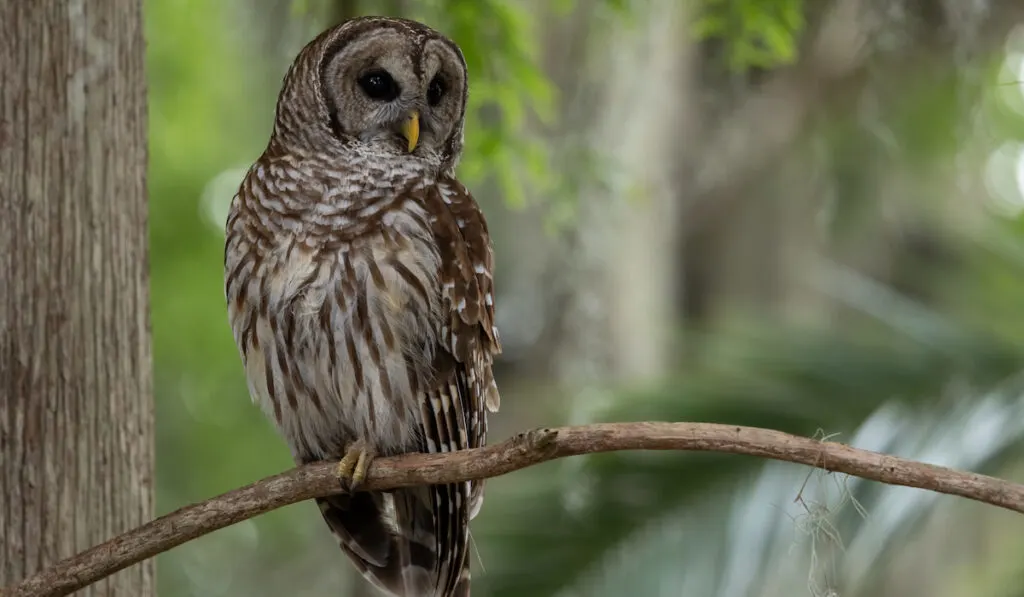
How Can You Identify a Barred Owl?
Barred owls are iconic birds of prey. They have become increasingly popular amongst bird watchers because of their:
- Distinct plumage pattern
- Loud calls
- And low-flying hunting behaviors
Barred owls are currently under the ‘least concern’ category on the IUCN Red List. However, their populations are still declining in some areas. The decline is due to human activities such as deforestation and hunting pressures.
Therefore, we must continue to work towards preserving their habitat for future generations.
How Can You Tell the Difference Between a Barred Owl and a Barn Owl?
Let’s explore the differences between barred owls and barn owls:
1. Barred vs. Barn Owls: Physical Attributes

You can distinguish barred owls by their dark brown feathers with white spots on the wings and chest. This plumage gives them a distinct ‘barred’ look. Their bills are yellowish, and they have dark eyes.
Barn owls possess much lighter plumage, usually differing between shades of cream/white with darker markings around the face area. They have an almost ghostly appearance! Their bills are more grayish, unlike barred owls’ bills.
Both species have rounded heads. However, barn owls also have longer ear tufts, distinguishing them from others.
Both birds have large and circular facial discs. But it is slightly smaller for barn owls than barred.
In addition, barn owls have prominent white eyebrows, which act as camouflage when hunting at night.
2. Barred vs. Barn Owls: Prey
Barred owls are opportunistic feeders. They consume a wide variety of prey, including small mammals such as rats, mice, voles, shrews, and rabbits.
Also, they eat birds like quail and grouse and amphibians like frogs or snakes. Barred owls catch fish occasionally, although they usually don’t hunt them actively.
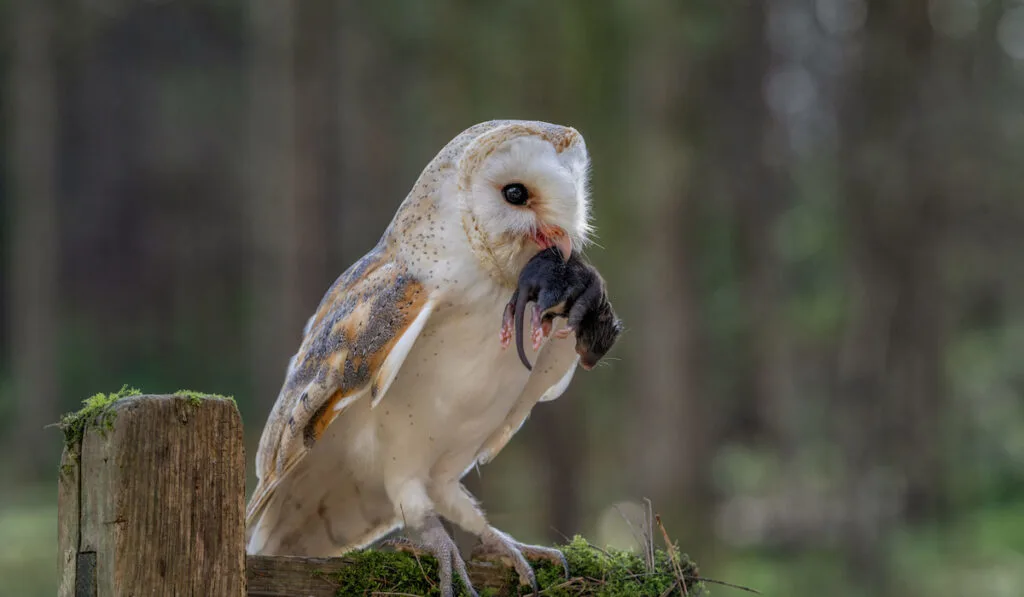
Barn owls feed on smaller animals such as insects, earthworms, and small rodents. But they may also take on larger prey when the opportunity arises.
Their diet consists of vertebrates (mice, voles) and invertebrates (insects). Barn owls can even consume large quantities of grasshoppers in one sitting if given the chance!
Occasionally, you may spot them raiding other birds’ nests or eating carrion from dead animals.
3. Barred vs. Barn Owls: Behavior
Barred owls and barn owls exhibit distinct behaviors that set them apart. These differences are most notable in their:
Hunting Techniques
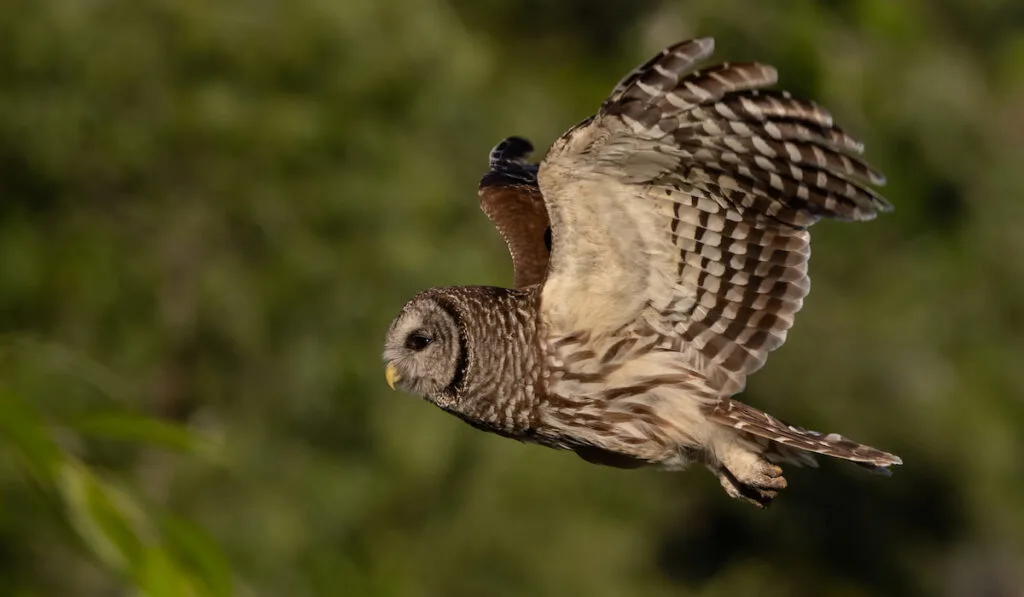
Barred owls rely on stationary perches for hunting and flying low over open fields or water bodies, looking for small mammals or fish to catch.
On the other hand, barn owls have an array of techniques that enable them to locate their prey. They use their sharp sight to identify their prey before diving toward them at lightning speed.
Social Interactions
Did you know that barn owls are solitary creatures? They only come together during breeding.
In contrast, barred owls form long-term pairs or family groups throughout the year.
Nesting Habits
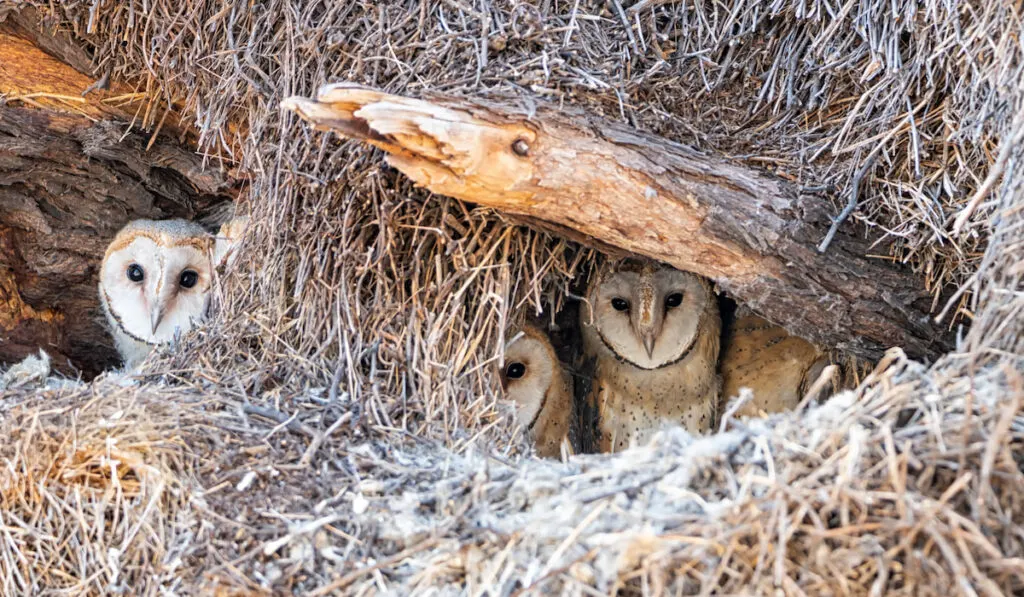
As far as nesting goes, both owls prefer hollow cavities within tree trunks. But they often build nests differently.
Barn owls construct shallow bowls using bark strips and twigs lined with feathers or fur plucked from prey items.
Barred owls create what look like bottomless cups out of grasses, lining them with any material available.
Migration Patterns
Barred owls are non-migratory birds. They rarely migrate from one place to another over long distances.
Barn owls are much different in migration. They travel great distances searching for suitable nesting sites and optimal hunting grounds.
4. Barred vs. Barn Owls: Calls and Vocalizations
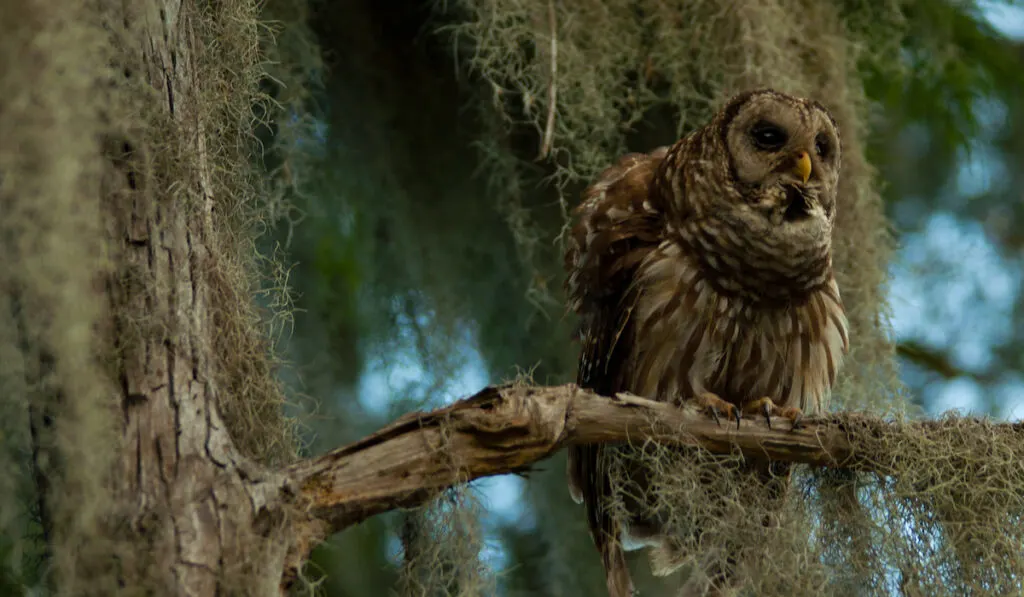
Another way you can tell these two species apart is through their vocalizations. Both make hooting sounds similar to other owls. But each has a unique pattern when you hear them one after the other.
Barred owls are well known for their distinctive call. It sounds like ‘who-cooks-for-you, who-cooks-for-you all.’
The male uses this call to attract a mate or as a territorial display.
In contrast, barn owls produce a loud shrieking sound called screeching.
5. Barred vs. Barn Owls: Predators and Threats
The primary threat to barred owls is human activity, including deforestation and pollution. Avian predators like hawks and other large birds hunting for their eggs and hatchlings pose another threat.
Because of their smaller size, barn owls are more vulnerable to predators. They include goshawks, golden eagles, peregrine falcons, red kites, and vultures. These predators prey on owlets or eggs in unattended nests.
Other than predators, barn owls must contend with passing vehicles that could accidentally hit unsuspecting flying birds. Moreover, agricultural practices such as tilling, and herbicide use reduce available prey like rodents.
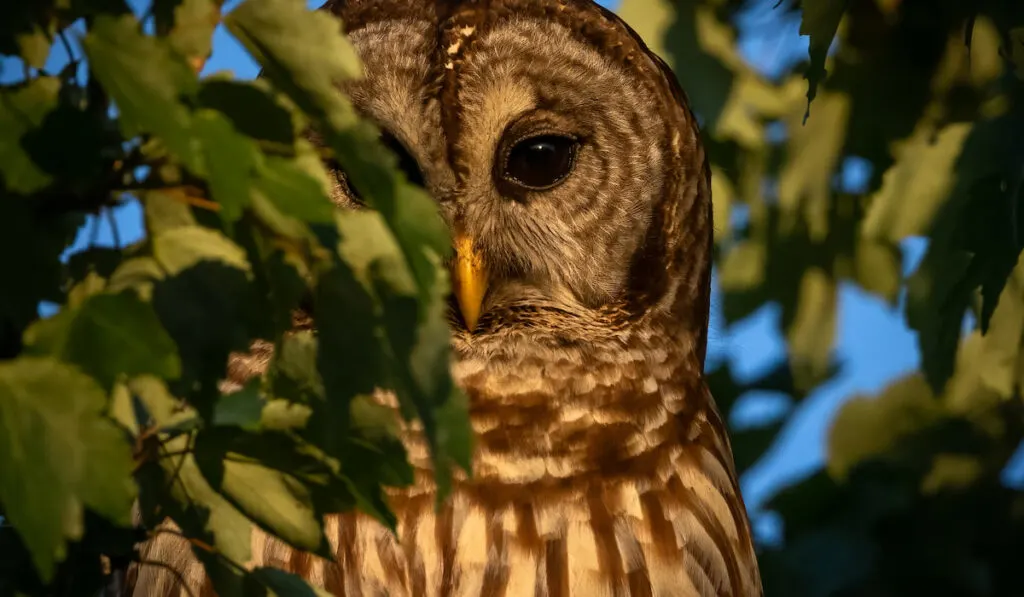
Is It Rare to See a Barred Owl?
The barred owl faces a severe threat of losing its natural habitat due to human activities.
Urbanization, logging, and other anthropogenic activities rapidly deplete forested areas. Therefore, suitable nesting and roosting space are diminishing.
Additionally, roads and railways can fragment habitats into smaller isolated pockets. Thus, reducing owl populations’ ability to find mates or disperse across their range.
These factors have precipitated an alarming decline in the global population over time.
There must be adequate measures to protect existing owl habitats from destruction. It is achievable by implementing the following:
- Land-use restrictions
- Reintroduction programs
- Monitoring efforts that provide valuable data on population trends and behavior patterns.
Conclusion
Barred owls and barn owls differ in several ways, ranging from their size and shape to the habitats they inhabit and the prey they consume. Both species are under the ‘least concern’ category on the IUCN Red List. But they are still under threat due to habitat destruction and predators.
As a birder, these facts will help you identify the two species and ensure that each receives adequate conservation efforts in the future.
Resources
- https://www.owlresearchinstitute.org/barn-owl
- https://www.eastsideaudubon.org/corvid-crier/2019/8/14/barred-owl
- https://www.adfg.alaska.gov/index.cfm?adfg=barredowl.printerfriendly#
- https://www.owlpages.com/owls/species.php?s=1740
- https://www.iucnredlist.org/species/22689094/93217844
- https://www.idahofallsidaho.gov/DocumentCenter/View/4970/Barred-Owl
- https://en.wikipedia.org/wiki/Barn_owl
- http://datazone.birdlife.org/species/factsheet/common-barn-owl-tyto-alba
- https://jbiolres.biomedcentral.com/articles/10.1186/s40709-018-0080-8
- https://www.sciencedirect.com/science/article/abs/pii/S0169204617300762
